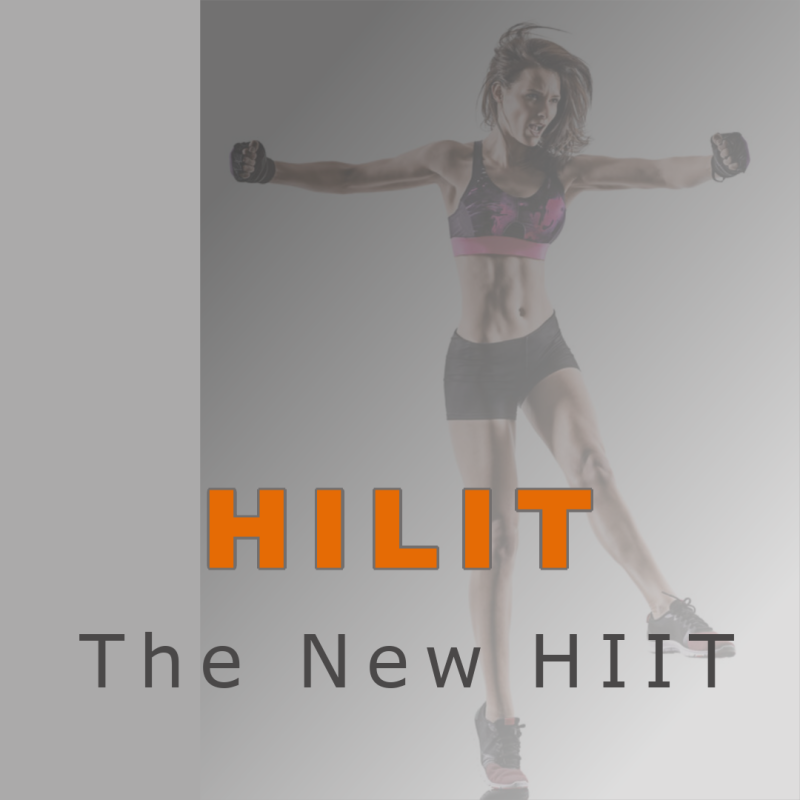
As the population of fitness enthusiasts over the age of 50 continues to grow, trends must keep pace with the realities of aging bodies while accommodating an ever-increasing demand for creative, results-driven exercise models. Combining the beneficial aspects of interval training with joint-friendly strength training, make way for a new and exciting format hitting the gym scene known as HILIT.
This year’s newest fitness endeavor for novice clients and seasoned athletes alike is called High-Intensity/ Low-Impact Training, aka HILIT. Nadav Ben-Chanoch and Kenny Rosenzweig, NASM certified personal trainers and co-founders of Rowgatta, originally conceived of this approach.
What is HILIT?
HILIT is unique blend of exercises utilizing rowing machines for cardio combined with various resistance moves on the gym floor. Training in this manner enables individuals to achieve a traditional sweat-inducing workout while treating the body — and especially joints –to a much lower level of impact. We might view this format as a kinder, gentler sibling to traditional boot camps!
The founders share their reasoning behind developing this program. “First, rowing is a full-body exercise that engages 86 percent of your muscles on each stroke. Second, it’s incredibly efficient and burns more calories than running or spinning. Third, it’s low-impact, which was very important to us. Fourth, rowing is a great combination of strength and conditioning. Unlike a treadmill, for example, you have to create your own resistance on the rower and really push hard with your legs. This is how you build strength rowing.”
While rowing definitely offers the duality of cardio and strength, workouts designed from this platform can make use of any form of cardio, either with equipment such as a cycle or elliptical, or by power walking.
Low on Impact, Not Results
The benefits of HIIT are well-studied, and include a top-notch caloric burn, an uptick in metabolic rate and improved heart health. “However, HIIT can be physically taxing on the body with constant exertion on the joints,” Rosenzweig says. “HILIT combines the benefits of HIIT, but in a low-impact environment that diminishes the effects of stress on our joints.” This trend is particularly welcomed by runners, CrossFit advocates and other athletes who frequently suffer wear and tear in their joints.
As you might have guessed from the name, HILIT workouts emphasize intensive exercise while easing up on the joint jolts experienced in HIIT exercises. Low-impact exercises involve keeping one foot on the ground throughout all movements. This alleviates a great deal of pressure that any kind of 2-foot movements (such as jumping) places on the joints.
Justin Norris, personal trainer who partnered with Taylor Gainor in co-founding Los Angeles’ studio LIT Method, adds what many participants consider the most positive attribute: “There’s no jumping, no running, and no burpees”. HILIT doesn’t disregard the importance of some impact to the body, in an effort to maintain bone density; in striking the perfect balance, personal trainers can open up an entirely new path to take clients closer to their goals.
High-intensity/low impact training works off of a platform similar to HIIT, with short rest intervals between sets of activities. When introducing this format to new or deconditioned clients, plan for somewhat longer breaks in between, and build up to the rest interval of 30-45 seconds that typifies HILIT.
A few examples of HILIT include the following:
- Walking at a brisk enough pace to elevate heart rate
- Walking uphill on a treadmill or adding hills to brisk outdoor walks
- Using walking poles to increase the intensity of power walking (or experiment with walking lunges)
- Hiking (especially uphill)
- Using the step machine at the end of a workout or as a short burst halfway through
The addition of upper body movements to these exercises forces the body to expend more energy, raising the participant’s cardio experience. Something as simple as actively engaging the arms while hiking, or intervals of keeping arms above the head during a power walk, can achieve the desired effect. Even though you design a circuit for clients, interspersing bouts of cardio with traditional strength-training lifts, keep in mind that such workouts may need to last a bit longer than those performed in HIIT training, to compensate for the lower heart rate that HILIT elicits…lower, but still highly effective!
Optimal Target Population
While these HILIT workout routines prove ideal for clients of all abilities, pay close attention to participants presenting with joint issues/bad knees/decreased lung capacity. Consider HILIT, too, if any of these conditions describe your clientele:
- A pregnant woman
- A novice interested in starting cautiously, needing to ease into a workout of lower intensity
- An overweight client instructed by a physician to embark upon an exercise program
- A client who suffered any injury affecting joints, bones or tissue
- A client choosing to combine rehabilitation therapy exercises with his cardio
- An older client dealing with arthritis or osteoporosis
Abolish “No Pain, No Gain”
At one point in time, personal trainers and group exercise instructors alike adhered to and preached the “no pain, no gain, hurts-so-good” mentality. Such punishing workouts can only last so long, however, before the body begins to suffer and ceasing making progress. For a while, fitness professionals witnessed an increase in yoga participants and foam roller classes.
While gentler formats have their place, hard-core gym-goers who savor that post-workout sweat-drenched feeling still longed for a safer action-packed platform. “HIIT was such a big thing, then foam rolling was big but people realized they weren’t getting as much out of their workouts as they wanted to. So now we’re seeing the trend moving toward high-intensity, low-impact with the focus being mobility and injury prevention,” says fitness instructor Brookelyn Suddell, the co-director of the Group Fitness department at Crunch gyms. “People want to walk out of the studio feeling like they got a good workout, but also feeling good in their bodies.”
One such high-intensity, lower-impact workout program, entitled SLT, gathers steam as it moves from the East Coast throughout the Midwest. “The way boutique fitness has evolved, this is the natural evolution,” says Amanda Freeman, founder of the program. “Before boutique fitness, people weren’t working out as often as they are now. Especially with the rise of high-intensity interval training and the frequency people are doing these classes, they’re seeing more injuries. They’re looking for alternatives that will get their heart rate up but not put them at risk for injuries or impact their joints.”
Taylor Gainor, a seasoned veteran of LIT Method, claims that “you can burn up to 1,000 calories in a class, or 500 calories in a 30-minute class, if you’re streaming a workout online. The cardio moves are structured to raise the heart rate for 20 seconds, then dropping it back down for 20 seconds.” Norris adds, “You’re saving your joints for longevity, but you’re still getting into that fat-burning zone—it’s the best of both worlds.”
HILIT Sample Routines
HILIT cardio kickboxing
This powerful and fun workout can incorporate plenty of kicks as well as intense upper-body movements. Take care to ensure no unnecessary wear and tear on the knees or ankles. An added bonus to this routine? No boxing bag required, further diminishing the worry of impact.
Try this routine as a circuit, 3 times:
- 1 min. alternating front jabs
- 1 min. alternating front kicks
- 1 min. modified jumping jacks (think, step one foot out at a time rather than jump both feet simultaenously)
- Dumbbell bicep curls 8-10 reps
- 45-second rest
- Dumbbell overhead triceps press 8-10 reps
- 45-second rest
- 1 min. bob -and -weave
- 1 min. alternating uppercuts
- 45-second rest
- 1- arm bent-over dumbbell rows, 2 sets of 8-10/arm
- 1 min. alternating back kicks
- 2 min. rest
This workout likely mimics the caloric burn of traditional step aerobics — a 155-pound person can expect to torch about 260 calories during a half-hour workout.
TRX Workouts
TRX makes use of the participant’s own body weight as well as nature’s gravitational pull, creating an ultimate workout for both strength and cardio. As with most high-quality fitness gear, the TRX easily adapts to the client’s level of fitness and his willingness to try “suspension training”. This format does not suit all of my clients – there is a modicum of “fear factor” associated with suspension training; always best to listen to and respect the client’s comfort level.
TRX circuit, 3 times:
- 30 sec. squat kick
- 30 sec. row
- 30 sec. chest flys
- 1 min. rest
- 30 sec. overhead squat
- 30 sec. skaters
- 30 sec. push-up’s
- 2 min. rest
Equipment-free circuit
Sometimes clients request workouts they can successfully complete whether traveling or stuck at home (status quo now during the COVID-19 quarantine). Combining these joint-friendly movements with traditional strength-training exercises guarantees a good endorphin release. Instruct clients to perform each exercise for 30 -45 seconds, followed by a 1-minute rest interval. If dumbbells or DynaBands can figure into an outside-of-the-gym program, insert a few resistance movements between cardio sets. Once you design the program, encourage the client to run through the circuit 3 times.
1. Run/hop/skip in place for 1 minute: focus on elevating the heart rate without unnecessarily rushing the movements. Keep knees “soft”.
2. Resistance/strength movement of choice: work 2 different body parts, 1 set of 10 reps each.
3. 40 modified mountain climbers (20/leg): focus on maintaining a strong, stable core rather than the pace of the movement.
4. Repeat Step 2, either working the same 2 body parts or 2 different muscle groups.
5. 45 seconds of “low-impact jack”: to avoid putting undue pressure on the knees, this movement involves more of a “step apart R foot, together; step apart L foot, together”, at a brisk pace.
Achieving Any Fitness Goal
In the vast and varied world of movement, something truly exists for every exercise personality. Sports Medicine doctor Jordan Metzl, MD espouses the all-familiar yet often-forgotten adage that “the best workout is whatever someone is interested in and brings a smile to his face, because that means it’s something he will do consistently.” Besides enjoying the activity, he adds, the key lies in revving up the metabolism. “You want your heart rate to go up and down through intense bursts of short exercise,” he says. “But that can be done through HIIT or HILIT. Physiologically, they can be the same.” Overall, good news for our bodies!
References:
www.wellandgood.com/high-intensity-low-impact-workouts/
www.healthline.com/health/fitness-exercise/low-impact-exercises
www.prevention.com/fitness/workouts/a25995418/hiit-training-workouts-benefits/
www.finder.com.au/high-intensity-low-impact-training
www.askmen.com/fitness/workout/behind-rowgatta-what-it-is-how-it-came-to-be-and-why-you-should-take-it.html






